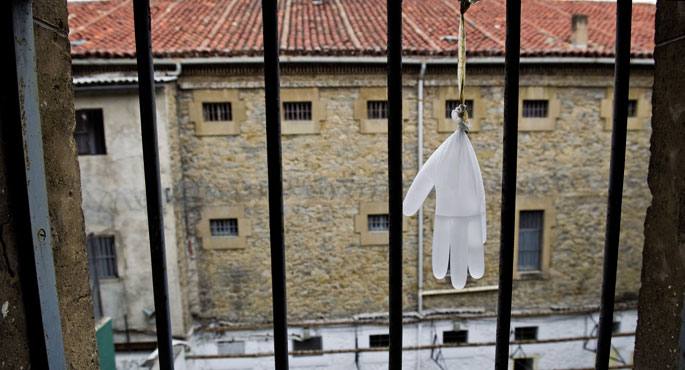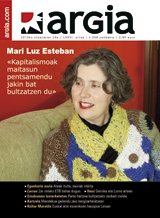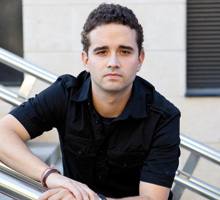Victory of Revenge
- We recall very well the mobilizations for the amnesty of the Transition. They led to the release of all Basque political prisoners. Closer are the latest demonstrations of repatriation of prisoners. This struggle is about to end, but it seems to be bogged down by the pretense of amnesty in the past, as well as by slogans and attitudes towards prisons. This punitive institution is healthy. Down the prison walls! Instead of claiming, the right-wing and left-wing parties, both the central and the autonomous governments, have set up new prisons regardless of the defeat of the prisons.

In the twentieth century, the Spanish criminal structure was completed. Prisons came from the previous century, but central and provincial jails were built at the beginning of the twentieth century. One of the first examples is El Dueso, the closest to Euskal Herria. This prison, built in 1907 in Santoña, was replacing the one known as La Darsena. It was considered a “colony”, as the prisoners had workshops, vegetable gardens and workshops there.
A member of the year is the prison of Pamplona, declared Provincial Prison of Pamplona (known as the letters PPP). It had a panoptic structure extended between European jails, that is, with galleries around a center that extended in a radial direction. The one in Pamplona had a two-sided, three-story cell, and it had the ability to close some 150 prisoners, according to the same sources. Ondarreta de Donostia-San Sebastián and Larrinaga de Bilbao were similar, both built in the 19th century and lasted until 1947 and 1960, respectively. Prisons such as El Dueso belonged to the state, while the prisons in Pamplona were provincial – at the same time as the prison of the forensic demarcation – the Provincial Council was also involved in the management, especially in the grants and in the appointment of several officials.
In addition to El Dueso, at the beginning of the century, there were six other major prisons dispersed in the Spanish State, which had already been tried to serve their sentences there: Ocaña, Cartagena, San Miguel de los Reyes, Alicante, Burgos and Puerto de Santa María. But in all territories there were also prisons in the Legal District, such as those in Pamplona, Bilbao and San Sebastian, which constituted a large and solid network of prisons.
In Ipar Euskal Herria, they had a similar but much more widespread criminal structure. In addition to the central prisons of La Petite Roquette (1836-1974) La Santé (1868) and Fresnes (1898), the Maison d’arret or local network of arrests was very extensive. In 1946, for example, there were 232 prisons of this kind. In addition, the Bagnes, special places of desertion for forced labour, in New Caledonia and in Guyana, were legally valid until 1938. The then Popular Front abolished these places of punishment, but until 1953 the last exiled and raped prisoners did not return.
The Crofton system: the gradual reinsertion
Contradicting the contradictions, these criminal structures sought to translate the ideas and objectives that had had a certain success in European criminal codes. To avoid vengeance and physical pain, the most modern theories said that grief should serve to reinsert itself. Thus, any prisoner could advance his criminal trajectory through a certain classification, reducing the penalty imposed. In 1901 the system known as Crofton entered into force in the Spanish State. The name came from the criminal system that Walter Crofton had deployed in Ireland, and that is now Trump. At the international conference held in 1889, Crofton presented the philosophy of his system and quickly spread to the rest of Europe.
In the Spanish State, the change, the structure of the degrees that has lasted until today, is also based on this philosophy. Since 1901, the ideal itinerary of prisoners has been classified into four degrees or several times. The first: the isolation period, initially was 8 days, after 3 to 4 days. Second: In addition to being in the courtyard with other prisoners, the prisoner could do work and study. Third: It was used for light work and for the performance of jobs in prison. Fourth: He brought parole.
This system is aimed at the reintegration of prisoners and has been approved by all political regimes, although it has been implemented in a very different way. The prison regulations approved in Spain in 1930, for example, collected the system of grades, and when it was renewed in 1956, despite the use of a different language, the legislation maintained a progressive classification of four degrees.
The reforming dreams of Victoria Kent
The basic undergraduate structure has undergone substantial changes depending on the political regimes. 1931 II. The most significant attempt to soften criminal policy was made together with the Republic. Victoria Kent, a lawyer and republican politician, was appointed Director-General of Prisons, and Republicans passed several laws to humanize prisons. Kent was the first woman in the world to take care of a state's prisons.
The transformative programme was enthusiastically launched. First, it prohibited certain similar behaviors, shackles, chains, or iron bonds that had been in force since ancient times. On the other hand, he imposed secularism in prisons, eliminating the duty of religious rites that existed until then. The chapel and the nuns were expelled from the prisons to ensure religious neutrality. Another of the most notable measures was the release of the prisoners, who were 70 years old. It made it possible to read the press in prisons without censorship. And he put up the budgets for the prisoners to have a proper diet. On the other hand, Ventas de Madrid was committed to building a new and modern prison for women.
But these innovative projects lasted little. Victoria Kent resigned 14 months later, in support of right-wing attacks by the media and prison officials. In the years that followed, things got considerably worse. In the place of Kent there were numerous directors and the majority agreed on what was said by his successor, Vicente Sol: “Prison is not an institution for social reintegration, but to promote the safety and isolation of the human being at work.”
The repressive trend has been accentuated since 1934. The Government was governed by the CEDA (right-wing confederation) and the PRR (Radical Republican Party). They tried to restore the death penalty and with the October Revolution that year they had a very big excuse for the II. To return to the situation of years prior to the Republic. In this context, the fort of San Cristobal and other similar enclaves of the Region of Pamplona were converted into jails, and many boats were conditioned from one day to the next as massive and inhumane prisons.
Francoist prisons: cruelty and pragmatism
These last Republican years were the direct antecedents of the long repressive stage that opened the War of 1936. The Franco apparatus soon repealed Republican legislation and fully applied the 1930 regulations to the increasingly numerous prisoners. The number of prisoners has been quite controversial, but taking into account the studies we currently have and according to the Statistical Yearbook, in 1940 the number of prisoners in prisons is estimated at about 270,000. This meant tremendous overcrowding in prisons. All the testimonies coincide. The Dueso, which held a capacity of 412 prisoners in 1934, accumulated 3,342 prisoners in 1939. In the Sales Women's Jail, designed with a lot of breakthroughs, instead of 450 people, at the end of the war there were 10,000 women prisoners. Something similar happened with the other central prisons: In Puerto de Santa Maria there were 253 prisoners in 1933, in 1942 there were 5,069. The one in Burgos, in the same year, went from 346 prisoners to 4,399.
In the Basque Country, the prisons of the capitals are known: Ondarreta, Nanclares, Larrinaga, Pamplona… They were full of prisoners and had to improvise new jails. Ezkaba's was extended to men as soon as the war began in 1936, while those of Saturrarán and Amorebieta were from 1937 prison guards for captive women. In addition, concentration camps and work battalions constituted the repressive universe of the early years of Franco. The latter disappeared after several years and became once again the main structure for punishing prisons.
The Francoists completely rejected the policy of reinsertion. But the number of prisoners was too large and they were forced to download them immediately. To do so, they had several factors. On the one hand, until 1943, the prisoners were killed and continuously shot. The post-trial killings, which lasted until 1975, were severe in frequency and number. On the other hand, in the first years of the post-war period, especially in the years 1941-1942, mortality rates in prisons were enormous. Another way to reduce the number of prisoners was by forgiveness or reducing penalties.
In 1947, the group of prisoners imprisoned because of the war was already much lower. To achieve this goal, they used the policy of degrees to expedite the streamlining of prisons. The motto of the day was “Release the penalty in exchange for work”. This initiative was designed by the Jesuit José Agustín Pérez del Pulgar, José María Sánchez de Muniain and Maximo Cuervo, and had a dual objective: on the one hand, to provide humanity to the repressive regime and, on the other, to provide economic resources to the prisoner, and above all to the State, since most of the prisoners' remuneration was kept in the State's account. But its main objective was to reduce the penalty, using various measures to do so.
The initiative, especially aimed at political prisoners, was subsequently extended to all detainees and, in the last years of the Franco dictatorship, was mainly used by social prisoners to reduce their sentences. Political prisoners, for their part, took the opportunity to enroll in the university and delve into their studies.
And today?
Article 25 of the 1978 Constitution highlights the reintegrating role of the prison: “Deprivation of liberty and security measures will aim at re-education and reintegration.” In the following years, the prison regulations approved in 1979 and 1996 have theoretically supported these rights, but the actions of reintegration and re-education have been relegated.
The Parot doctrine has made it clear that the main role of prisons is a punishment infected with revenge. Another example in the field of education is that many prisoners studied with the mediation of the UPV/EHU, which was the main support, since 2008 have been suspended by the order of the Government of Spain. This shows that legislation and actual practice on prisons are not in line with human laws.
Only other relationships of strength and mobilizations will open the way for humanity. Victoria Kent once said: “Hate crime, be merciful to its author.” These words are fundamental for human rights to be drawn among prisoners.
Etxerat elkarteak "urgentziazko balorazioa" plazaratu du Espainiako Auzitegi Gorenak hartutako erabakiaren ostean. Osorik eskaintzen dizuegu jarraian:
Carmen Gisasola aske geratu da astelehenean, kartzelan 24 urte eman ondoren. 1990. urtean atxilotu zuten Gaskoiniako Landetan (Okzitania) eta azken urteetan Zaballako (Araba) kartzelan zegoen preso. Langraitz bideari helduta, hirugarren graduan zegoen Gisasola.
Jose Ricardo de Prada epaileak “neurriz kanpokotzat” jo ditu ETAko presoei ezartzen zaizkien kondenak. ETAkoak ez diren presoek betetzen dituzten zigorrekin alderatuta, aldea “handiegia” dela adierazi du.
Presoen espetxeratzea urtebete edo bi luzatu ahalko dute neurri berriaren ondorioz. “Parot doktrina” delakoarekin alderatu dute Espainiako Auzitegi Nazionaleko bi magistratuk.
Estrasburgoko Giza Eskubideen epaitegiak ‘Parot doktrina’ ezeztatzearekin batera 30.000 euroko ordaina ezarri zuen Ines Del Riorentzat. Espainiak uko egin dio ordaintzeari.
Estrasbusburgoko Giza Eskubideen epaitegiak 197/2006 doktrina baliogabetu ostean, 20 preso askatu dituzte aste honetan: hamalau hilaren 26an eta sei 27an.
Auzitegi Nazionalak beste bederatzi preso askatzeko agindua eman du, 'Parot doktrinaren' aurkako Estrasburgoren ebazpena aplikatuta.
Espainiako Auzitegi Konstituzionalak gaur markatuko du Estrasburgoren ebazpenaren gaineko irizpidea, Iñaki Fernandez de Larrinoa presoaren auziari buruzko erabakia hartzean.
Espainiako Auzitegi Nazionalak beste 13 euskal preso askatzea erabaki du, Estrasburgoren epaia aplikatuta. Hemendik aurrera, ebazpenaren inguruko erabakiak ez dituzte Zigor Salaren osoko bileretan hartuko, eta horrek preso bakoitzaren prozedura azkartzea ekarriko duela espero... [+]
Estrasburgoko Giza Eskubideen Epaitegiak 197/2006 legearen zenbait praktika baliogabetu ostean, asteartearekin hitzartuko du Espainiako Auzitegi Gorenak nola aplikatu sententzia, Europa Pressen arabera.
Espainiako Auzitegi Nazionalak 197/2006 doktrina aplikatu zitzaien bederatzi preso aske uztea erabaki du. Ondorengoak dira presoak: Txomin Troitiño, Isidro Garalde, Iñaki Urdiain, Jon Aginagalde, Jokin Sancho, Elías Fernández Castañares,... [+]





















